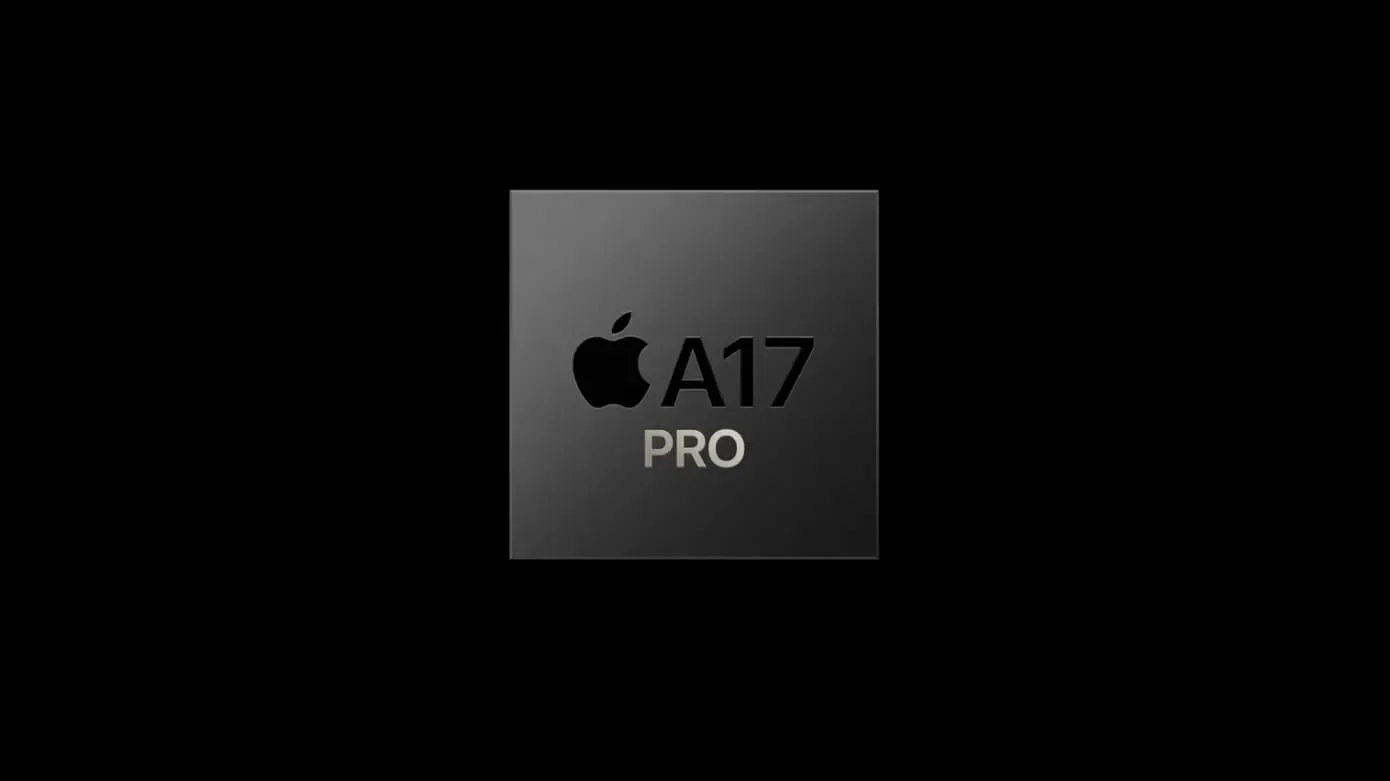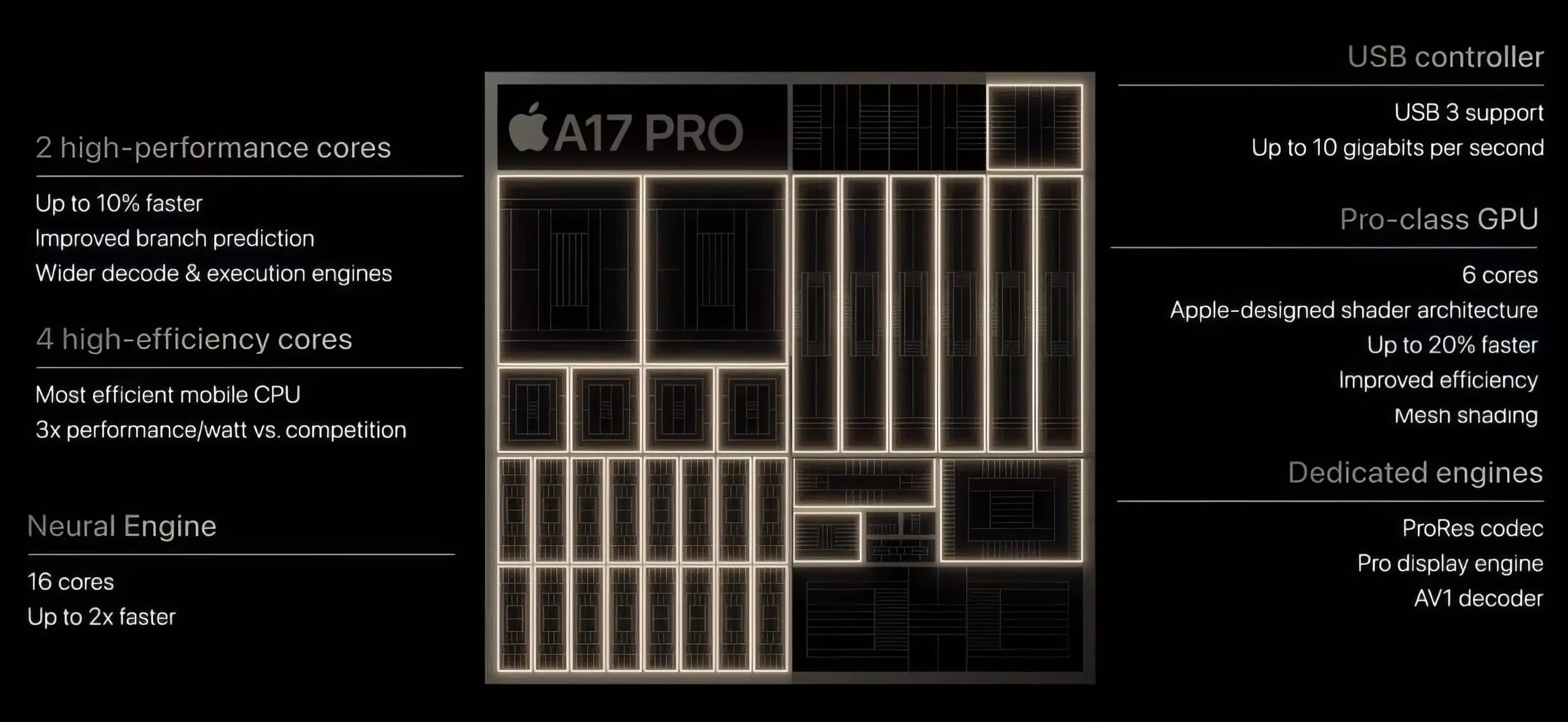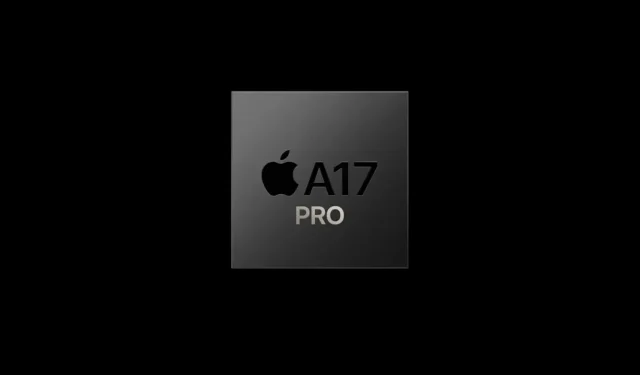When Apple announced the new iPhone 15 Pro and 15 Pro Max on Tuesday, you would have been hard-pressed to miss the announcement about the powerhouse underneath its fancy new titanium construction: the A17 Pro chip.

While Apple has been particularly “Pro” happy in its product naming schemes as of late, it’s worth noting that this is the first time Apple has ever used the word “Pro” in one of the company’s iPhone chips. Typically, it has been reserved for one of the higher-end desktop-class chips, such as the M1 Pro or the M2 Pro, and they tend to blow the competition out of the water.
The new A17 Pro chip is no different. Apple says it will challenge desktop-class computing in the palm of your hand, and while iPhone chips have long led the competition in terms of performance, the A17 Pro only continues to give Apple’s platform more headway to embarrass the competition.
What is A17 Pro?

Apple’s new A17 Pro chip is manufactured using TSMC’s all-new 3nm process, which is one whole nanometer less than its predecessor, the A16 Bionic. This revolutionary powerhouse sports 19 billion transistors, that’s 3 billion more than the A16 Bionic, which aid in the chip’s ability to handle complex workloads very quickly.
Like many of Apple’s mobile processors in recent memory, A17 Pro is built using a series of high-performance cores and high-efficiency cores. The high-performance cores handle complex processing tasks, while the high-efficiency cores handle low-power tasks that can be performed in the background with very little power draw.
A17 Pro can be considered a hexa-core processor, sporting two of the aforementioned high-performance cores, and four of the aforementioned high-efficiency cores. Apple says that A17 Pro’s high-performance cores are up to 10% faster than those in the A16 Bionic chip.
Because A17 Pro is a system on a chip, there are other engines and controllers present here as well, including a six-core GPU, a built-in USB controller to help manage those 10Gb/s transfer speeds of the new USB-C port, a 16-core Neural Engine that performs almost 35 trillion operations per second, dedicated engines for ProRes and AV1 video formats, and a controller for Apple’s ProMotion Display.
A more powerful GPU
In addition to processing power, Apple has invested a lot into the graphics performance of the A17 Pro. In fact, Apple seems to call it one of the company’s most significant GPU redesigns ever.
In addition to carrying one additional GPU core than the A16 Bionic, the A17 Pro’s GPU is said to be up to 20% faster than its predecessor while using less energy in the process. This is great for mobile gamers, video editors, and anyone else who needs graphics processor power in the palm of their hand.
One of the things that Apple spent a lot of time discussing at the event was the GPU’s support for hardware-accelerated ray tracing, a feature that improves the accuracy and visual appearance of lighting and reflection effects in games and other graphical mediums.
Ray tracing is something that took desktop gamers by storm in recent years, first led by NVIDIA with the company’s 20-series graphics cards in 2019, and it’s excellent to see this coming to the mobile world.
Hardware-accelerated ray tracing is faster and more effective than software-based ray tracing, and in Apple’s demonstration, it was shown how A17 Pro maintains buttery-smoothness through ray tracing-enabled games while a non-A17 Pro chip stuttered and lagged while trying to run the same graphics.
A17 Pro’s GPU also features MetalFX upscaling, which combines the chip’s power with the iPhone 15 Pro & 15 Pro Max’s Neural Engine to boost image resolution as efficiently as possible, giving the end user high-end graphics that use less power for longer game times.
Wrapping up
The A17 Pro is a substantial improvement in mobile chip architecture, thanks to its new 3nm process, improved performance and power efficiency, and new graphics capabilities. But it’s worth noting that it’s still just an incremental upgrade from the A16 Bionic.
As some people have already pointed out in recent years, smartphones in general are getting about as good as they’re ever going to get, with only small and incremental spec bumps replacing the jaw-dropped doubled performance that we once saw when smartphones were an emerging technology. Having said that, if you’re using an iPhone with an A16 Bionic chip, it’s far from outdated, and it’s still flying past most of the competition.
If you are lucky enough to upgrade to a handset with an A17 Pro chip inside, however, then you won’t be disappointed. App and game developers are sure to make use of the extra processing and graphics power in their apps and games, ensuring that the user experience remains as sharp as ever on a brand-new Apple device.
Are you excited about the A17 Pro chip and what it brings to the table? Let us know in the comments section down below.


